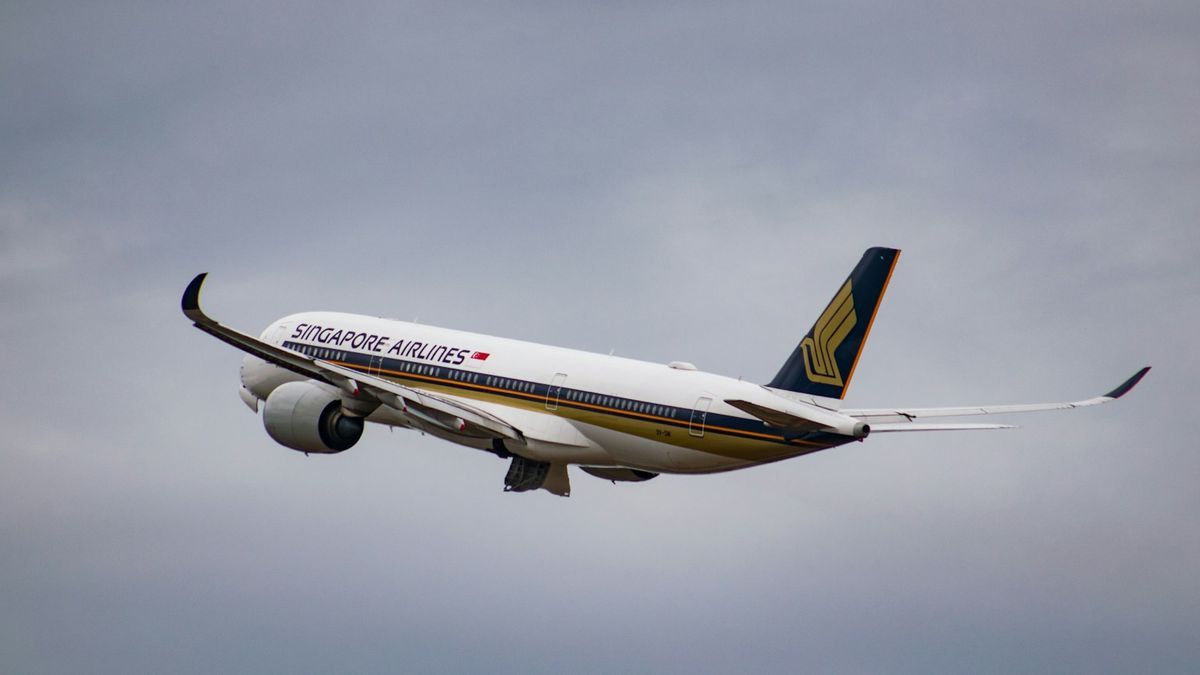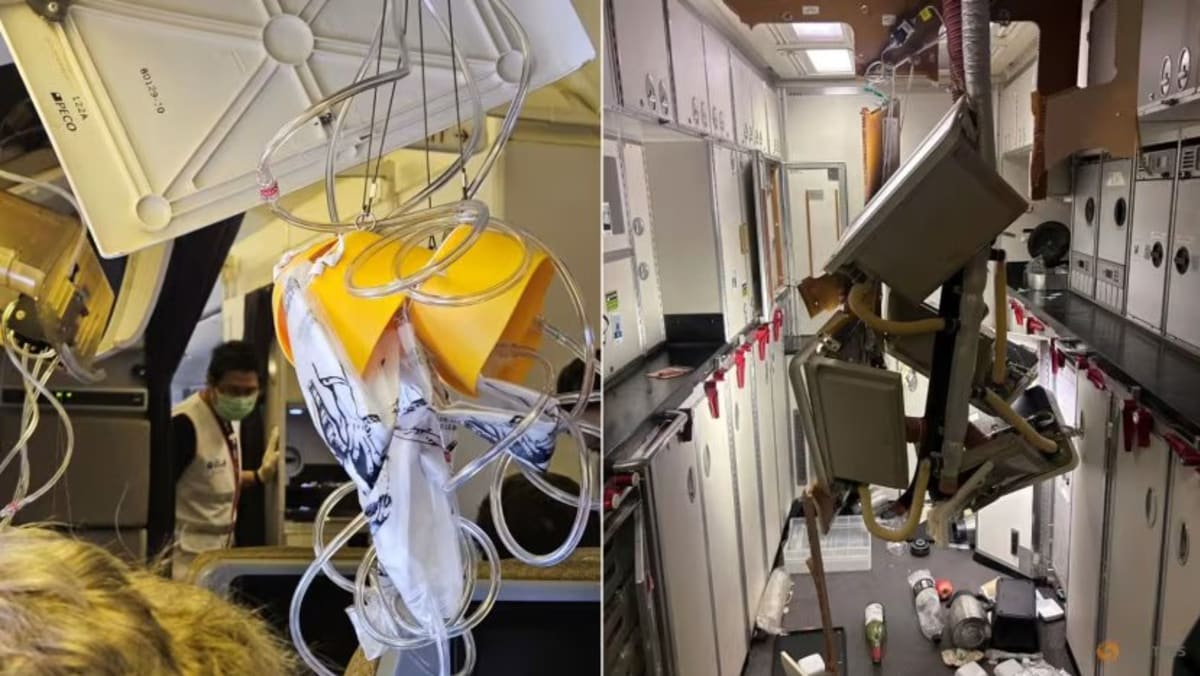Overview of Severe Turbulence
Severe turbulence singapore airlines – Severe turbulence, also known as extreme turbulence or clear-air turbulence, is a phenomenon in aviation that poses significant risks to aircraft and passengers. It is characterized by sudden, unpredictable, and violent changes in aircraft motion, often causing injuries, damage to the aircraft, and, in extreme cases, even fatalities.
Turbulence is a common occurrence in aviation, but severe turbulence is a relatively rare event. However, it can have devastating consequences when it does occur. According to the Federal Aviation Administration (FAA), severe turbulence accounts for approximately 10% of all aviation accidents.
Turbulence, a common occurrence in air travel, can range from mild to severe, as recently experienced by Singapore Airlines passengers. However, the intensity of such turbulence pales in comparison to the devastating Greenfield, Iowa tornado of 2004, an EF-5 twister that claimed the lives of six people and left a trail of destruction.
While turbulence can be unsettling, it is typically not life-threatening, unlike the catastrophic forces unleashed by tornadoes.
Types of Turbulence
There are several different types of turbulence encountered in aviation, each with its own unique characteristics and causes. The most common types include:
- Clear-air turbulence (CAT): This type of turbulence occurs in clear weather conditions and is often difficult to detect. It is caused by the interaction of different air masses with varying temperatures and densities.
- Thermal turbulence: This type of turbulence is caused by the uneven heating of the Earth’s surface. It is most common during the day, when the sun’s rays heat the ground unevenly, creating updrafts and downdrafts.
- Mechanical turbulence: This type of turbulence is caused by the interaction of the aircraft with the surrounding air. It can be caused by mountains, buildings, or other obstacles in the aircraft’s path.
- Frontal turbulence: This type of turbulence occurs at the boundary between two air masses with different temperatures and densities. It is most common during thunderstorms and other weather fronts.
Singapore Airlines’ Approach to Severe Turbulence: Severe Turbulence Singapore Airlines
Singapore Airlines prioritizes the safety and well-being of its passengers and crew during severe turbulence. The airline has established comprehensive protocols and procedures to ensure the highest level of preparedness and response.
Turbulence is a normal part of flying, but it can be particularly severe in Singapore Airlines. The recent Iowa tornado is a reminder of the power of nature and the importance of being prepared for anything when flying. While the chances of experiencing severe turbulence are slim, it is important to be aware of the risks and to take precautions to stay safe.
Pilots and cabin crew undergo rigorous training to enhance their knowledge and skills in managing turbulence. They receive regular updates on weather patterns, turbulence forecasts, and best practices for handling unexpected encounters.
Use of Technology and Equipment
Singapore Airlines utilizes advanced technology and equipment to mitigate the effects of turbulence. The aircraft fleet is equipped with state-of-the-art weather radar systems that provide real-time information on turbulence intensity and location.
The skies above Singapore were no sanctuary from turbulence recently, as passengers aboard a Singapore Airlines flight endured a harrowing experience. In contrast to the serene skies over Greenfield, where a tornado touched down earlier today, leaving a trail of destruction in its wake , the Singapore Airlines flight encountered violent updrafts and downdrafts, causing panic and injuries among the passengers.
Thankfully, the plane landed safely, but the incident serves as a reminder of the unpredictable nature of air travel.
In addition, the aircraft feature turbulence-dampening systems that help stabilize the flight and reduce the impact of turbulence on passengers. These systems work in conjunction with advanced flight control systems to maintain a smooth and comfortable ride.
Case Studies of Severe Turbulence Incidents Involving Singapore Airlines

Singapore Airlines has experienced several severe turbulence incidents throughout its history. These incidents have varied in severity, from minor injuries to fatalities. By analyzing the causes and contributing factors of these incidents, Singapore Airlines has been able to implement safety improvements and enhance its approach to severe turbulence.
Singapore Airlines Flight 006 (2000), Severe turbulence singapore airlines
On October 31, 2000, Singapore Airlines Flight 006, a Boeing 747-400, encountered severe turbulence while flying from Singapore to Los Angeles. The turbulence caused the aircraft to drop suddenly, resulting in injuries to 119 passengers and crew members. The incident was attributed to clear-air turbulence, which is difficult to detect and can occur without warning.
When a greenfield tornado strikes, its powerful winds can cause severe turbulence for aircraft flying in the area. Singapore Airlines has been impacted by such turbulence in the past, resulting in injuries to passengers and crew. The airline has since implemented new safety measures to minimize the risk of injuries during turbulence, including requiring passengers to remain seated and wear their seatbelts at all times.
Singapore Airlines Flight 21 (2007)
On January 10, 2007, Singapore Airlines Flight 21, an Airbus A330-300, encountered severe turbulence while flying from Melbourne to Singapore. The turbulence caused the aircraft to drop and roll violently, resulting in injuries to 129 passengers and crew members. The incident was attributed to wake turbulence from a preceding aircraft, which can create unpredictable and hazardous conditions.
Singapore Airlines Flight 368 (2016)
On June 27, 2016, Singapore Airlines Flight 368, a Boeing 777-300ER, encountered severe turbulence while flying from Singapore to London. The turbulence caused the aircraft to drop and shake violently, resulting in injuries to 27 passengers and crew members. The incident was attributed to clear-air turbulence, which can occur without warning and can be particularly hazardous at high altitudes.
Severe turbulence recently experienced by Singapore Airlines underscores the importance of understanding the dynamics of weather storms tornadoes . These atmospheric phenomena can create hazardous conditions for aircraft, and it’s crucial for airlines to have measures in place to mitigate the risks associated with severe weather.
By studying the behavior of storms and tornadoes, airlines can develop strategies to minimize the impact of turbulence on their passengers and ensure a safe and comfortable flight experience.
Lessons Learned and Safety Improvements
The severe turbulence incidents involving Singapore Airlines have led to several important lessons learned and safety improvements. These include:
- Enhanced training for pilots on how to identify and respond to severe turbulence.
- Improved weather forecasting and tracking systems to provide pilots with more accurate and timely information about potential turbulence.
- Development of new technologies, such as turbulence detection systems, to help pilots avoid or mitigate the effects of turbulence.
- Increased use of seat belts and other safety equipment to minimize the risk of injuries during turbulence.
By implementing these safety improvements, Singapore Airlines has significantly reduced the risk of severe turbulence incidents and enhanced the safety of its passengers and crew.
Passenger Experiences and Responses to Severe Turbulence

Severe turbulence can have significant physical and psychological effects on passengers. Physically, passengers may experience nausea, vomiting, disorientation, and difficulty breathing. Psychologically, they may experience fear, anxiety, and panic.
To cope with turbulence, passengers should remain calm and follow the instructions of the flight crew. They should fasten their seatbelts, keep their feet on the floor, and avoid moving around the cabin. Passengers who are prone to motion sickness may want to take medication before flying.
Comparison of Singapore Airlines’ Approach to Severe Turbulence with Other Airlines
Singapore Airlines (SIA) has established a comprehensive approach to severe turbulence management, prioritizing passenger safety and comfort. Comparing SIA’s protocols with other major airlines reveals both similarities and areas for improvement in the industry’s overall approach.
Best Practices in the Industry
Many airlines, including SIA, adhere to international aviation regulations and industry best practices. These include:
– Real-time weather monitoring and forecasting systems to anticipate potential turbulence zones.
– Crew training and recurrent simulations to enhance situational awareness and response capabilities.
– Passenger education and guidance on turbulence safety procedures.
– Collaboration with meteorological agencies and other airlines to share data and enhance predictive capabilities.
Areas for Improvement
While the industry has made significant progress, areas for improvement remain:
– Standardization of Turbulence Reporting: Airlines use different scales and terminology to report turbulence severity, leading to potential confusion and inconsistent passenger experiences. Establishing a standardized reporting system would improve communication and understanding.
– Enhanced Turbulence Detection Technology: Investing in advanced sensors and data analytics can enhance real-time turbulence detection and provide more accurate forecasts, enabling airlines to take proactive measures.
– Passenger Communication and Reassurance: During turbulence, effective communication and reassurance from cabin crew can reduce passenger anxiety and enhance the overall experience.
– Collaboration on Research and Development: The industry should foster collaboration on research and development to advance turbulence prediction and mitigation technologies.
Technological Advancements and Future Strategies for Mitigating Severe Turbulence
Advancements in technology are continuously shaping the aviation industry, offering innovative solutions to enhance flight safety and passenger comfort. In the realm of turbulence management, emerging technologies and research hold immense promise for predicting and mitigating severe turbulence, thereby improving Singapore Airlines’ approach to turbulence management.
Advancements in Turbulence Prediction
- Real-time Turbulence Detection Systems: These systems utilize sensors on aircraft to monitor atmospheric conditions and detect turbulence in real time. This allows for timely alerts and evasive maneuvers to minimize passenger discomfort and potential injuries.
- Machine Learning Algorithms: Machine learning algorithms can analyze vast amounts of historical turbulence data to identify patterns and predict areas of potential turbulence. This information can be integrated into flight planning systems to optimize routes and avoid areas of high turbulence.
Advancements in Aircraft Design
- Active Gust Load Alleviation Systems: These systems use sensors and actuators to adjust the aircraft’s control surfaces in real time, reducing the impact of turbulence on the aircraft and passengers.
- Composite Materials: Composite materials are lighter and more flexible than traditional aircraft materials, allowing for greater flexibility and reduced susceptibility to turbulence.
Future Strategies for Passenger Safety and Comfort
- Personalized Turbulence Alerts: Passengers could receive personalized alerts based on their individual preferences and susceptibility to turbulence, allowing them to take appropriate measures.
- Enhanced Cabin Design: Future aircraft cabins could incorporate features such as adjustable seats and restraints to enhance passenger stability during turbulence.